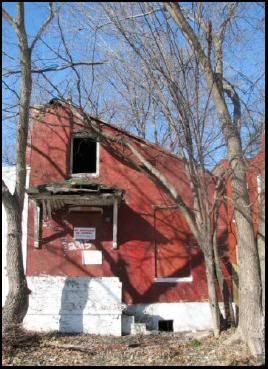In the most recent issue of
St. Louis Magazine, the editors whittled the innumerable restaurant pool in St. Louis down to the best 35. But the issue contained a farewell to departed restaurants as of late: of course, Balaban’s was featured. Can’t forget Busch’s Grove, either. KoKo, formerly of 3257 Ivanhoe, was on the list as well. The editors noted (I don’t have the magazine in front of me right now, and it’s not online) that a new restaurant would be filling the space, but that the site was perhaps “cursed”, having turned over multiple times in the span of a couple years. It turns out that this new restaurant is
Bistro Toi, an Asian and Pan-European restaurant, to use its own descriptors on its web site.
(Take a tour of the Ivanhoe Business District below, from Google Streetview):
View Larger Map
Some wonder if an upscale or even mid-priced restaurant can make it in the Ivanhoe Business District after KoKo failed. But I say: why not? The Ivanhoe district has all the ingredients for success as an urban business district.
The district, located on Ivanhoe between Arsenal and Fyler, is very walkable. It is also very drivable, since Interstate 44 is right around the corner. There’s also a bus line that serves the area, and a fairly nearby Metrolink station in Shrewsbury.
Crime is not a major issue in the neighborhood.
Parking, while not as easy as pulling into one of a couple thousand spaces in front of a big box shopping center, is still relatively easy and plentiful.
The surrounding population is, for the most part, middle class.
Here are some stats from the city’s website about the area around Ivanhoe (specifically, from the corner of Scanlan and Ivanhoe). The numbers are derived from the 2000 Census.
½ Mile Radius:
Population: 3,751
Average Household Income (1999 dollars): $51,282
Pct. of households earning over $60,000: 37.7%
Pct. of households earning over $100,000: 9.2%
Pct. of residents with at least “Some College” education: 45.1%
1 Mile Radius:
Population: 17,881
Average Household Income (1999 dollars): $43,169
Pct. of households earning over $60,000: 24.3%
Pct. of households earning over $100,000: 4.9%
Pct. of residents with at least “Some College” education: 44.2%
While this is totally unempirical, let’s look at a control area: one with a lot of successful businesses, restaurants or retail: South Grand (at Connecticut).
½ Mile Radius:
Population: 8,567
Average Household Income (1999 dollars): $37,876
Pct. of households earning over $60,000: 17.7%
Pct. of households earning over $100,000: 5.3%
Pct. of residents with at least “Some College” education: 33.5%
1 Mile Radius:
Population: 38,706
Average Household Income (1999 dollars): $35,397
Pct. of households earning over $60,000: 15.7%
Pct. of households earning over $100,000: 4.7%
Pct. of residents with at least “Some College” education: 32.5%
Now, you might argue that South Grand draws from a much larger area than Ivanhoe, and so it is less reliant on its nearby demographics. But that’s the whole reason I’m astounded at Ivanhoe not being one of the city’s most occupied business districts. It is in perhaps the most stable neighborhood of any district. Sure, it’s not a hotbed of pedestrian activity, and it’s not all that dense, but clearly there is a concentration of middle class residents that do their shopping/dining somewhere. Why did they not support KoKo? Why is Ivanhoe off most St. Louis residents’ radars?
Is St. Louis simply lacking in local entrepreneurs? Or is it that loyalty to malls and other more autocentric shopping/dining ventures convinces a potential small business owner not to even try it out? With the failure of the St. Louis Marketplace on Manchester (though reasons for that may not be entirely its own doing), I would hope that residents would demand more small-scale, local shopping and dining options. But time and time again, we opt to build Loughborough Commons and Southtown Centers at our prominent intersections. Ultimately, no matter how occupied these shopping centers remain, no matter how well they’re maintained, no matter what desired corporate tenants they attract, they’re ultimately damaging to a walkable, human scale business district like Ivanhoe.
For no reason other than that these corporate stores are familiar and convenient, the shopping centers win out over the small business districts. And yet, it’s the South Grand, the Morganford, the Macklind, the Manchester, the Ivory Triangle, the Euclid that truly defines the character of our city.
Why should a restaurant on Ivanhoe fail? It can’t be about the money. There’s enough aggregate income in the area for an upscale restaurant. It simply has to be that those with the money drive to more car-friendly and visible and well-known areas. Ivanhoe isn’t cursed, as St. Louis Magazine says. It’s just one of the many blacklisted old school business districts that are struggling to compete with stale, inferior, less interesting chain stores and restaurants. These types of placeless places have an edge because we allow them to. Not enough St. Louisans “go out of their way” to support local businesses. Not enough of them realize that investing dollars into your local economy—as opposed to sending them to the corporate headquarters of, say, Qdoba, wherever that may be—means investing in the place you live. Even if you spend more dollars at a local place than you might at a chain, more of your money is going to local employees and is funding local services. The
“local multiplier” is huge and is not advertised enough. It's funny that Republicans and Democrats alike don't want to rely on
foreign oil, and want to create energy locally, but they can't make the same connection with their retail/restaurant dollars. Invest in the place you live!
For these reasons, Ivanhoe shouldn’t be struggling.






















